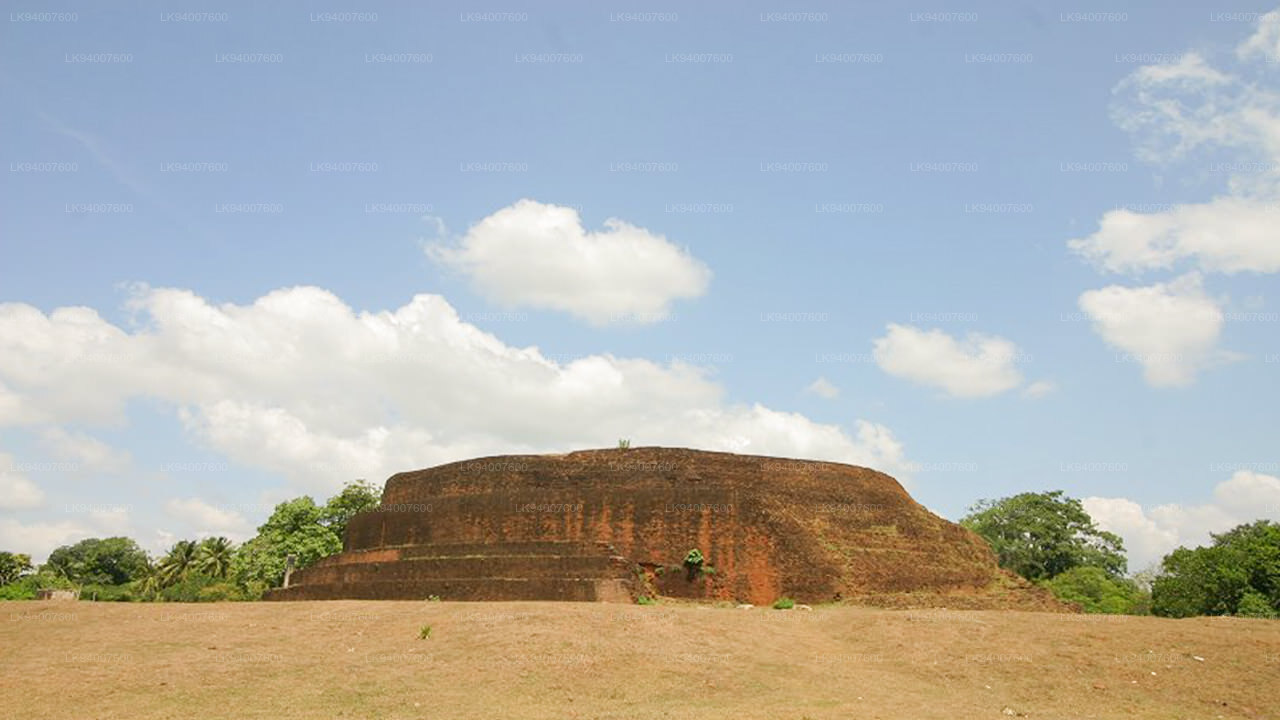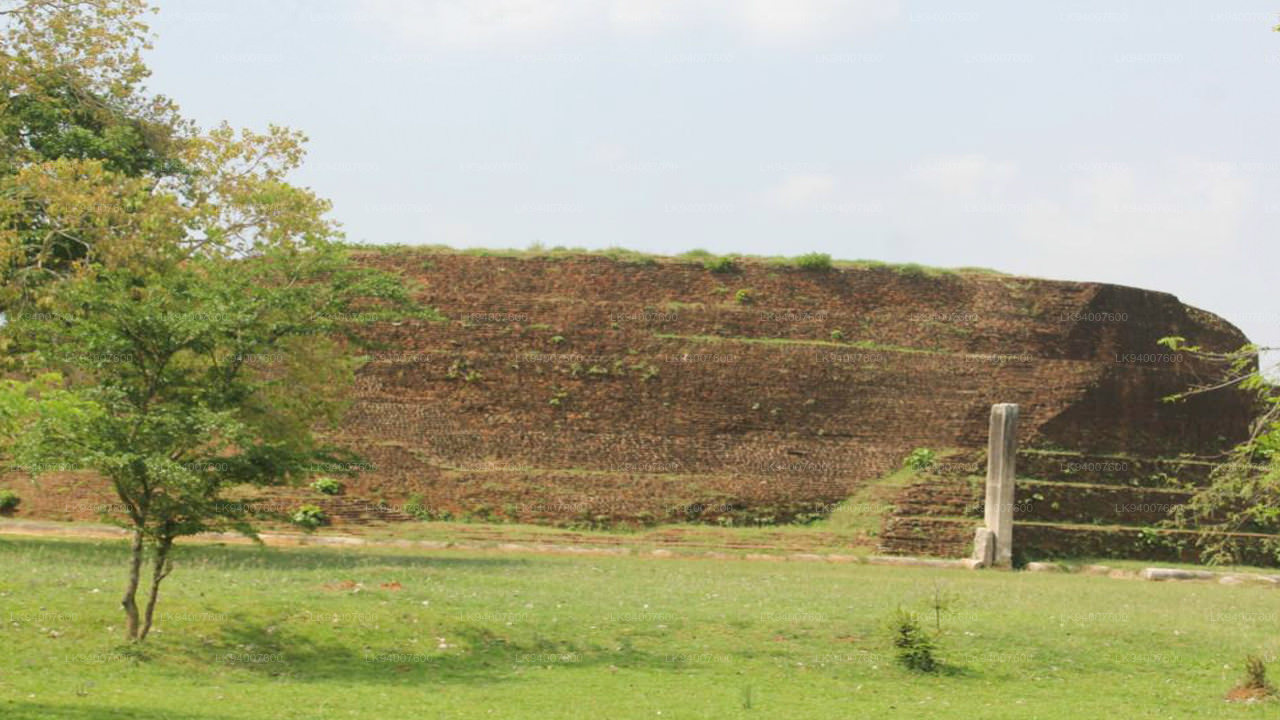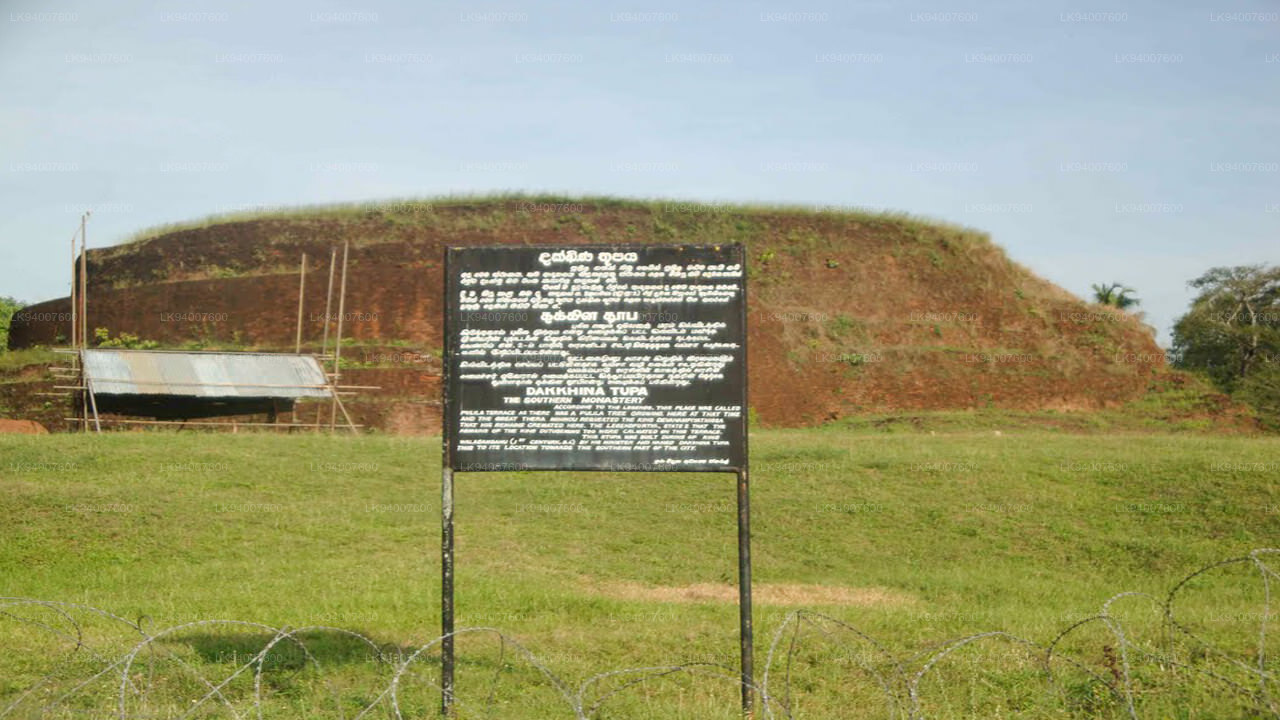
Anuradhapura By
Anuradhapura tilhører den nordlige centrale provins i Sri Lanka. Anuradhapura er en af Sri Lankas gamle hovedstæder og berømt for sine velbevarede ruiner af den gamle lankanske civilisation. Byen, der nu er på UNESCOs verdensarvsliste, ligger 205 km nord for den nuværende hovedstad Colombo i Sri Lanka.
Dakkhina Stupa



Dakkhina Stupa
Dakkhina Stupa is a 2nd-century BC large brick Stupa in Anuradhapura, Sri Lanka. Earlier thought to be a monument of King Elara, it was later identified as the Stupa of ancient Dakini (Dakkhina) Vihara by Senarath Paranavithana with the help of a Brahmi inscription of the 3rd century A.D. unearthed from the ground between the southern and western Vahalkadas of the Stupa.
This structure was for centuries locally known as the tomb stone of king Ellalan, known as Elara Sohona, which was worshipped by Tamils and Sinhalese. However, some were not agree with this identification it is generally accepted that this Stupa has been built over the cremation site of King Dutugemunu.
History
According to the legends this site was known as the Pulila terrace as there was a growing Pulila tree at that time period and the thero, Mihindu had requested from the King Devanampiya Tissa (307 BC – 267 BC) to cremate his remains here. The legend further states that the remains of King Dutugamunu were also cremated in this terrace. It is said that this Stupa was constructed and named as Dhakkina thupa by a minister during the reign of King Valagamba (103 BCE and c. 89–77 BCE)
Om Anuradhapura-distriktet
Anuradhapura tilhører den nordlige centrale provins i Sri Lanka. Anuradhapura er en af de gamle hovedstæder i Sri Lanka og berømt for sine velbevarede ruiner af den gamle lankanske civilisation. Byen, der nu er på UNESCOs verdensarvsliste, ligger 205 km nord for den nuværende hovedstad Colombo i Sri Lanka. I den hellige by Anuradhapura og i nærheden findes et stort antal ruiner. Ruinerne består af tre typer bygninger: dagobas, klosterbygninger og pokuna (damme). Byen havde nogle af de mest komplekse kunstvandingssystemer i den antikke verden, beliggende i landets tørre zone, og administrationen byggede mange tanke til at vande jorden. De fleste af de civile er singalesere, mens tamiler og srilankanske maurere bor i distriktet.
Om Nord-Centralprovinsen
North Central Province, som er den største provins i landet, dækker 16% af landets samlede landareal. North Central Province består af to distrikter kaldet Polonnaruwa og Anuradhapure. Anuradhapura er det største distrikt i Sri Lanka. Dets areal er 7.128 km². North Central Province har adskillige potentialer for investorer til at starte deres virksomheder, især landbrug, agrobaserede industrier og husdyrsektoren. Mere end 65% af North Central Provinces befolkning er afhængige af basal landbrug og agrobaserede industrier. NCP kaldes også "Wew Bendi Rajje", fordi der er mere end 3.000 mellemstore og store tanke placeret i provinsen. Sri maha bodiya, Ruwanweli seya, Thuparama dageba, Abayagiri Monastry, Polonnaruwa Rankot wehera, Lankathilake er bange.











